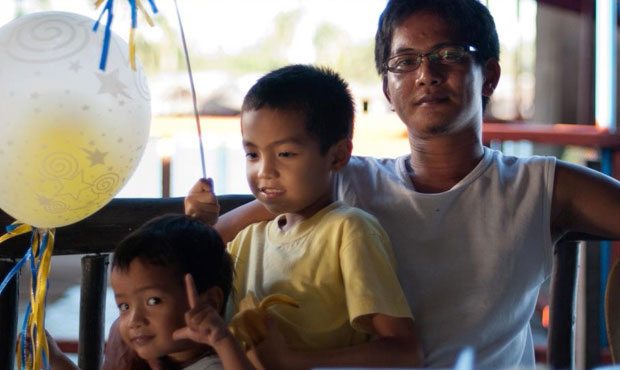Task force formed in new media killing
This time, there’s no downplaying the killing of another Filipino journalist.
Malacañang on Sunday vowed to get the killers of a radio broadcaster, who was gunned down in Surigao del Sur on Friday.
Communications Secretary Herminio Coloma said the Philippine National Police had formed a “special investigation task group” to focus on the case of Michael Milo, 34, a radio station supervisor in Tandag City.
“We condemn the killing of Mr. Michael Milo, a broadcaster of Prime Radio FM in Tandag City, Surigao del Sur,” Coloma announced in Filipino over Radyo ng Bayan.
“The PNP has been ordered to do everything needed to capture and bring to justice the killers of Mr. Milo.”
Milo was driving his motorcycle when shot dead by three men, who were also on board a motorcycle, on his way home at 4:30 p.m. on Friday.
He was taken to Adela Sierra Ty Provincial Hospital, but was declared dead on arrival.
Police did not immediately give a motive for the killing but the radio station’s operations chief King de la Rosa said Milo had told him that he had been receiving death threats, although he did not say who sent them.
Marital problems
Judith Suarez, station manager of Sure FM and close friend of Milo’s, said the victim had been confiding with her that he had serious marital problems with his wife whom he believed was having an affair with a policeman.
“He always told me he had received death threats through text messages and he believed these were coming from his wife’s lover,” Suarez said.
The station manager said the problems had become serious that Milo decided to acquire a .45-cal. pistol.
But Suarez said the police was looking into other angles, like a personal grudge possibly arising from business deals, because Milo had promoted and sold “Doc Alternatibo” herbal medicines through the radio station.
According to her, Milo was good-natured but she heard that the victim would sometimes engage in a fight whenever he was drunk.
Milo used to be bureau chief of Periodico SurSur, a local newspaper, and had been active writing for the regional tabloid before he helped establish the radio station primarily aimed at promoting the products of “Doc Alternatibo.”
Exposés
He was fond of writing exposés, said Rodrigo Catoto, a local newspaper publisher who once employed Milo as a correspondent for Surigao del Sur.
“He was not loud; you can say he was nondescript and kept to himself almost every time,” Catoto said. “When I heard that he’s been killed, I was surprised to learn he worked for radio.”
The killing of Milo came just a week after another radio broadcaster, Joas Dignos, was shot dead in Valencia City in Bukidnon.
Coloma also condemned that incident, insisting that the government was “determined to end the culture of impunity that has brought about these media killings and we call on the citizens to support our efforts.”
Coloma, who used to write a column for a business paper, earlier came under fire for suggesting that the 24 journalists killed under the Aquino administration was bloated.
Included on the list, he said, were “a driver of a network, employees of fly-by-night newspapers and a block-timer selling skin whiteners.”
Coloma assurance
Coloma on Sunday assured the public that the government was working to “arrest all suspects in the killing of journalists.”
He cited the case of Gerry Ortega, a Palawan broadcaster who was shot and killed in 2011.
“All government agencies are working together for the investigation and prosecution to bring justice to the killing of members of the media,” he said.
The killing of Milo further worsened the Philippines’ standing as one of the most dangerous places for journalists.
The New York-based Committee to Protect Journalists (CPJ) ranks the Philippines as the third-worst in its “impunity index” of countries that fail to fight violence against the press.
Milo’s killing is the latest in a series of unsolved murders of journalists in the Philippines.
The CPJ said at least 72 journalists had been murdered since 1992, not counting the cases of Dignos and Milo.
In one of the worst instances of such crimes, 32 journalists were among 58 people kidnapped and massacred, allegedly by a powerful political clan, the Ampatuans, in Maguindanao in November 2009.
The trial of some of the accused in the massacre is ongoing but many of the accused remain at large.
President Aquino said the government would stop such murders but local media groups have accused his administration of not doing enough and of downplaying the killings.—With reports from Danilo Adorador III, Inquirer Mindanao; and AFP
Originally posted: 5:52 pm | Sunday, December 8th, 2013
RELATED STORIES:
Second PH broadcaster murdered in a week
Bukidnon radio broadcaster shot dead
Palace official condemns killing of broadcaster in Bukidnon















